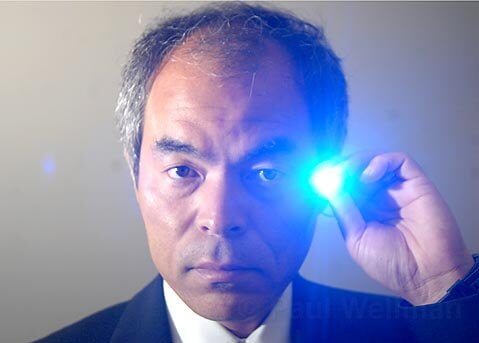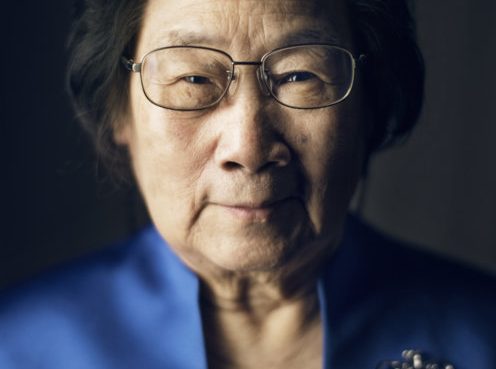Friends, today I am going to throw some light in the very inspiring life of another Nobel Laureate from Asia, Japanese physicist, Dr. Shuji Nakamura. He was awarded Nobel in Physics in the year 2014 with two others, for invention of Blue LED (Light-emitting diodes). Shuji Nakamura was born on May 22, 1954. He grew up in his birthplace Oku, a tiny fishing village on the Pacific coast of Shikoku, and the smallest of Japan’s four main islands. Shuji’s father was as a maintenance man for Shikoku Electric Power.
As a school student, Shuji was never counted in the creamy layer. But he was a very good volleyball player and during school days, he preferred to devote more of his time in volleyball. His love for volleyball landed him in trouble as he could not clear any entrance exam conducted by reputed universities in Japan. He was in dilemma about his future as nothing was going according to his plan. In school, Shuji liked Mathematics and Physics and wanted to be a theoretical Mathematician or Physicist. He stopped following his dream as was cautioned by his teachers that as his future with Mathematics or Physics would be at risk, it’s better if he could do something in engineering line. Finally, Shuji could decide that he would pursue Electrical Engineering as it is close to Physics and accordingly at the age of 19 he became a graduate student of Electrical Engineering in Tokushima University. But he felt that the engineering course in the university, to which he was enrolled, was very outdated and irrelevant, making him to lose interest in the field. This gave him a bad taste of engineering; he even stopped attending classes for a brief period after completing two years of his graduation. But suddenly the things changed and Shuji could rediscover his interest in this field after attending a lecture on semi-conductor and he realised that there is still lot of fun left in engineering. This single lecture was also enough to make him to decide to do masters in the same subject. Shuji stayed two more years and completed masters from Tokushima University at the age of 25.
After his masters, in the year 1979, Shuji joined a company called Nichia. Nichia was a small company with around 200 workers and it was into the business of making fluorescent lamp for colour television. During his days in Nichia, Shuji worked extensively in laboratory to acquire valuable practical experience in his field, which in his later life contributed a lot towards his professional growth. He also went to the University of Florida in United States as a Visiting Research Associate in the year 1988 to return a year later. After his return from US, Shuji started working on LED in the laboratory of Nichia. Shuji’s new project cost Nichia almost 2% of its total business at that time. For that, obviously as a Group Leader, Shuji was under tremendous pressure to convert his concepts and experiments to deliverables and commercially valuable products. Shuji and his associates worked relentlessly for the next few years to finally make a commercially viable model of Blue LED, which Nichia announced on 29th November, 1993 at a press conference in Tokyo. In the mean time, Shuji was also able to complete his PhD from Tokushima University in the year 1994. This genius Japanese Scientist is now an US Citizen and working as a Professor in the Department of Material, College of Engineering, University of California, Santa Barbara.




